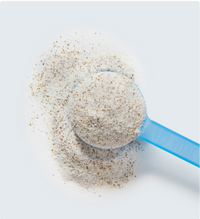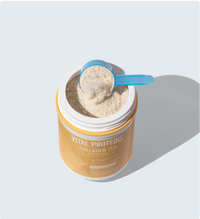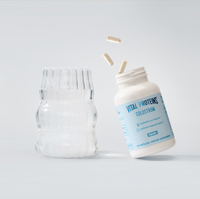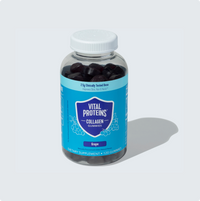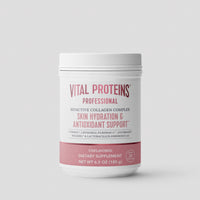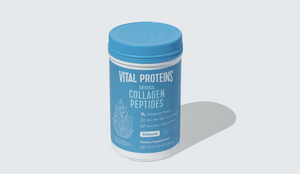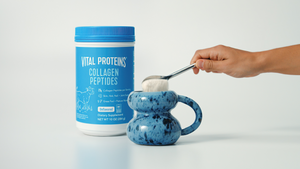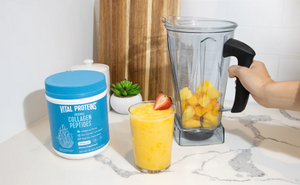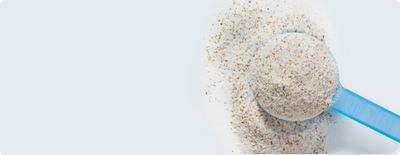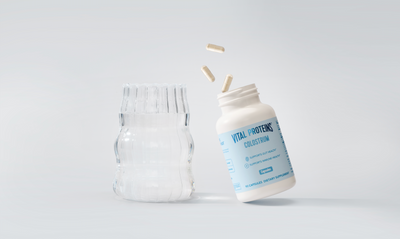Key Takeaways:
- The “eight glasses a day rule” is more of a guideline: hydration needs vary by individual and are influenced by factors like exercise, diet, climate, and age.
- Monitoring your body’s signals, like thirst, urine color, and sweat rate, can help you understand your daily water needs and avoid dehydration-related symptoms.
- Building consistent hydration habits, such as carrying a refillable bottle and setting reminders, can support overall wellness and workout recovery.
How Much Water Should a Person Drink a Day?

We've all heard that you should drink eight glasses of water everyday, but this hydration rule isn't so black and white. The amount of water we need to drink daily depends on factors, including diet, age, sex, exercise, and even where we live. Aiming to reach this magical number doesn't make much sense when our body's hydration needs fluctuate day by day, thanks to these factors. Learn how much water you should drink, how to calculate your daily needs, whether you can drink too much water, and tips for staying hydrated.
Vital Note: This article has been made available for informational and educational purposes only. It is not intended to be a substitute for professional medical advice, diagnosis, or treatment. Always seek the advice of your physician or another qualified health provider with any questions you may have regarding a medical condition. Your licensed healthcare professional can best provide you with the diagnosis and treatment of any medical condition and assist you in deciding whether a dietary supplement will be a helpful addition to your regimen.
How Do You Know If You Are Dehydrated?
To determine if you’re dehydrated, pay attention to your body and check your urine. If your urine is dark or has a strong odor, you likely need to increase your water intake, whereas if your urine is a light-yellow color, but not clear, you're likely on track with hitting your hydration goals. Always check with your physician if anything is out of the ordinary.
Another great tool to determine hydration is, of course, thirst. Keep in mind that by the time you are thirsty, you may already be dehydrated.
Symptoms of dehydration to watch out for include:
- Dizziness
- Fainting
- Increased hunger
- Muscle cramps
- Decreased sweat
How Do You Calculate How Much Water to Drink?
When dehydrated, workout performance and endurance suffer. That’s why getting enough to drink is especially important for athletes. Luckily, calculating your sweat rate is easy. Just follow the below equation to find your sweat rate and figure out how much water to drink based on your weight and water lost during exercise.
Sweat Rate = (A+B)/C
- A= Pre-exercise body weight - post-exercise body weight (in ounces)
- B= Fluid consumed during exercise (in ounces)
- C= Time exercising (in hours)
Here’s how to calculate your water intake, step-by-step:
- Weigh yourself before and after your workout.
- Add it to any water or drinks (in ounces) you had during the workout.
- Divide that total by how long you exercised in hours.
Tips for Drinking More Water
It can be easy to forget to drink water, especially if you’re on a busy schedule. Here are the best ways to stay hydrated and ensure you’re fueling up with enough water throughout the day:
- Bring a refillable water bottle everywhere. Keep it by your bedside, and drink water as soon as you wake up. Take it with you to the gym, work, classes, and even daily errands.
- Drink before meals and during workouts. Always have a glass of water with your meals, whether it’s breakfast or lunch, or dinner. Take water breaks during your workouts to replenish lost fluids.
- Set timers. Based on your recommended water intake, set several reminders on your phone throughout the day to remind you to drink water regularly.
- Use flavor. Let’s face it, some people just don’t love plain water—and that’s alright. Add a flavored supplement with electrolytes like Nuun Sport if you struggle to drink water. Not only will this transform your water into something more enjoyable, but it will also help replenish essential minerals and keep you hydrated.
- Consume hydrating foods. Hydration can come from food too, like cucumbers, watermelon, and strawberries. While this isn’t to say you can replace water with these foods alone, they can certainly supplement your hydration efforts.
How Much Water Is Too Much in a Day?
It is possible to drink too much water, but this amount varies from person to person. Health conditions, like hyponatremia, occur when the concentration of sodium in the blood is too low. As a result, the amount of water in the body increases, which causes cells to swell. Hiring a knowledgeable trainer or coach before endurance events can certainly help to avoid these issues before they even happen.
Your Hydration Game Plan
Ready to make the change and lead a healthier (hydrated) lifestyle? Use this table as your guide:
| Section | Key Info | Details / Tips |
|---|---|---|
| Daily Water Needs | Varies per individual | Needs are influenced by diet, age, sex, activity level, and environment. |
| Hydration Check | Listen to your body | Urine should be pale yellow, thirst means you're already behind, and watch for symptoms like dizziness, cramps, and fatigue. |
| Sweat Rate Formula | (Pre-weight − Post-weight + Fluids Consumed) ÷ Time Exercising | This gives the sweat rate in ounces per hour and helps athletes estimate fluid needs during workouts. |
| Tips to Stay Hydrated | Build consistent habits | Carry a refillable bottle, drink water first thing in the morning, use reminders throughout the day, add flavored supplements to water, and consume water-rich foods like watermelon. |
| Too Much Water? | Yes, it’s possible | Overhydration can cause hyponatremia (low sodium). Work with a coach or a medical professional for endurance training hydration plans. |
Go Beyond Hydration with Vital Proteins
Whether you’re a gym rat or a casual walker, you can’t overlook hydration: it’s essential for performance and overall well-being. Achieve your hydration goals (and more) with a little help from Vital Proteins—add Collagen Peptides to your water to support joint health, skin elasticity, and post-workout recovery while keeping your hydration habits strong.*
*These statements have not been evaluated by the Food and Drug Administration. This product is not intended to diagnose, treat, cure, or prevent any disease.

